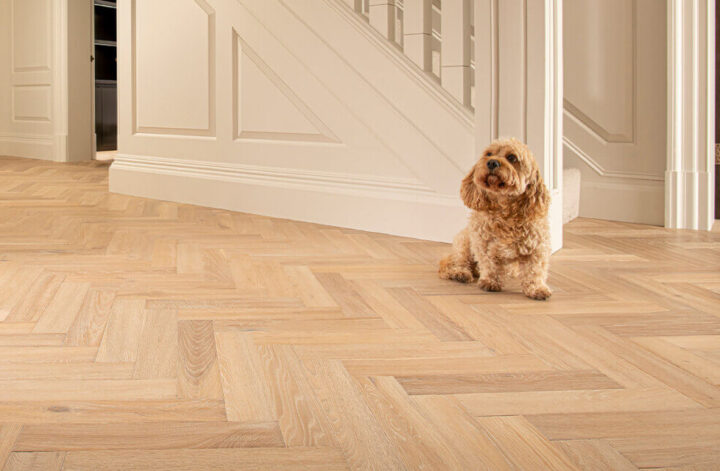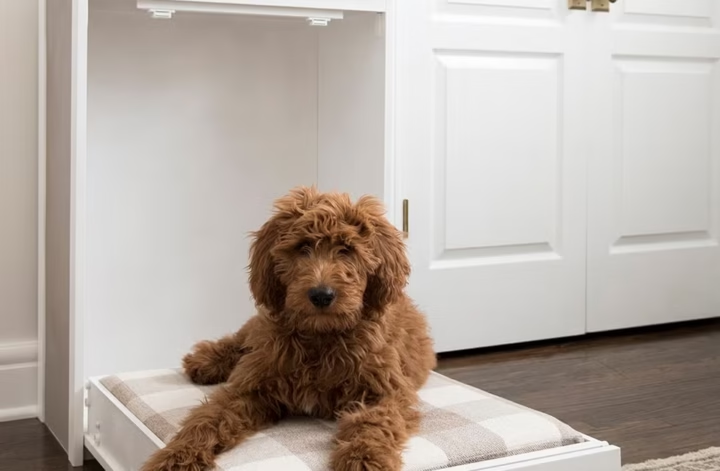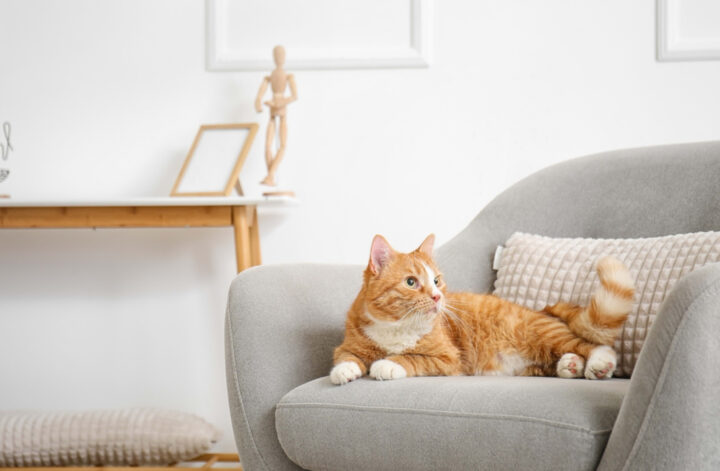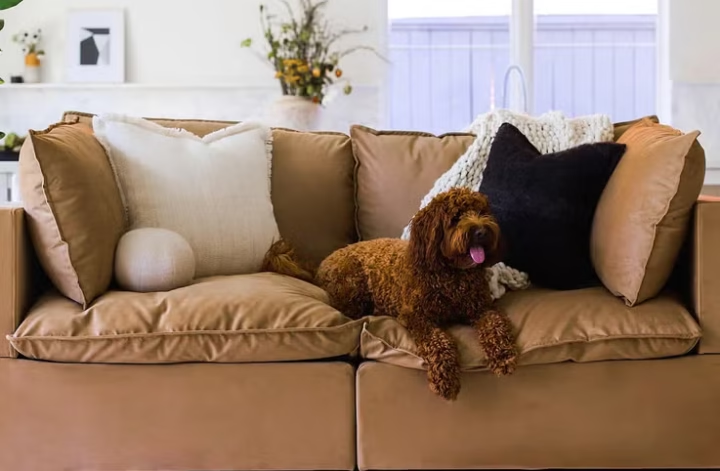Pets bring warmth, joy, and comfort into our homes — along with fur, claws, occasional accidents, and plenty of playful energy. The floor is one of the most heavily used surfaces in any interior, and when you have dogs or cats, it’s important to choose materials that are resistant to wear, moisture, scratches, and stains.
In this article, we’ll explore the best flooring materials for pet-friendly homes, what to avoid, and how to combine durability, safety, and comfort for both people and animals.
Key Requirements for Pet-Friendly Flooring
Before choosing a specific material, it’s important to understand what features matter most when you live with pets.
Important qualities to consider:
-
Scratch resistance
-
Low absorption of moisture and odors
-
Ease of cleaning and maintenance
-
Non-slip surface
-
Comfort and warmth for paws
-
Safety: non-toxic and hypoallergenic
-
Durability and long lifespan
Vinyl (LVT, SPC)
One of the most popular and practical choices.
Pros:
-
Highly scratch-resistant
-
Waterproof and odor-resistant
-
Easy to clean, handles cleaning chemicals well
-
Wide range of designs (wood, stone, etc.)
-
Moderate price
Cons:
-
Can be slippery when wet
-
Cheaper options may emit VOCs
Tip: Choose certified eco-friendly vinyl with anti-slip texture.
Ceramic or Porcelain Tile
A practical and durable solution, especially for kitchens and hallways.
Pros:
-
100% waterproof
-
Extremely scratch-resistant
-
Doesn’t absorb odors
-
Can last for decades
Cons:
-
Feels cold, especially in winter
-
Can be slippery
-
Hard surface — uncomfortable for joints
Tip: Use rugs or pet mats in areas where your pets rest.
High-Durability Laminate
Modern laminate flooring with a high abrasion class (AC3–AC5) can be a good option for pet owners.
Pros:
-
Resistant to scratches and dents
-
Handles moderate claw activity well
-
Looks attractive and natural
-
Warmer than tile
-
Easy to install or replace
Cons:
-
Sensitive to moisture — may swell with repeated exposure
-
Noisy — amplifies the sound of claws and movement
-
Some finishes can be slippery
Tip: Choose water-resistant laminate with a textured, matte finish.
Cork Flooring
An eco-friendly and comfortable material, especially good for bedrooms or living rooms.
Pros:
-
Soft, warm, and pleasant underfoot
-
Absorbs sound and impacts
-
Naturally hypoallergenic
-
Non-slip
Cons:
-
Prone to scratching
-
Sensitive to moisture unless sealed
-
Not ideal for kitchens or entryways without extra protection
Tip: Use cork flooring with a polyurethane or vinyl wear layer for durability.
Natural Wood (Hardwood, Parquet)
Beautiful, warm, and timeless — but not the most practical with pets.
Pros:
-
Eco-friendly and natural
-
Visually appealing
-
Comfortable underfoot
-
Can be sanded and refinished
Cons:
-
Easily scratched
-
Sensitive to water and stains
-
Expensive
-
Requires regular care
Tip: Opt for harder wood species (like oak or ash) and use matte oil finishes rather than glossy lacquers.
Quality Linoleum
Modern linoleum can be a budget-friendly and pet-friendly option.
Pros:
-
Affordable
-
Easy to install and maintain
-
Moisture-resistant
-
Resistant to claw marks
-
Warm and slightly cushioned
Cons:
-
Low-quality types may emit VOCs
-
Appearance can wear over time
-
Can dent or scratch with heavy use
Tip: Choose semi-commercial or natural linoleum with antibacterial protection.
Carpet and Rugs
Not ideal for full-floor coverage but fine in designated pet zones.
Pros:
-
Soft and cozy
-
Absorbs sound
-
Comfortable for pets to lie on
Cons:
-
Difficult to clean
-
Absorbs fur and odors
-
Prone to staining
-
Collects allergens and dust
Tip: Choose low-pile, washable synthetic carpets or area rugs that can be easily vacuumed and cleaned.
Comparison Table: Flooring Materials for Pet-Friendly Homes
| Material | Scratch Resistance | Water Resistance | Ease of Cleaning | Paw Comfort | Price Range |
|---|---|---|---|---|---|
| Vinyl | ★★★★☆ | ★★★★★ | ★★★★★ | ★★★☆☆ | Medium |
| Ceramic Tile | ★★★★★ | ★★★★★ | ★★★★☆ | ★★☆☆☆ | Medium |
| Laminate | ★★★☆☆ | ★★☆☆☆ | ★★★★☆ | ★★★☆☆ | Medium |
| Cork | ★★☆☆☆ | ★★☆☆☆ | ★★★☆☆ | ★★★★★ | Mid-High |
| Natural Wood | ★★☆☆☆ | ★☆☆☆☆ | ★★☆☆☆ | ★★★★☆ | High |
| Linoleum | ★★★☆☆ | ★★★★☆ | ★★★★☆ | ★★★★☆ | Low |
| Carpet | ★☆☆☆☆ | ★☆☆☆☆ | ★☆☆☆☆ | ★★★★★ | Medium |
Other Factors to Consider
Surface Texture
-
Smooth surfaces are less ideal — they can be slippery and uncomfortable
-
Textured or matte finishes help pets walk and run without slipping
Color
-
Light floors show stains and fur more easily
-
Medium and warm tones hide paw prints and hair better
Noise
-
Some pets are scared by the sound of their own claws on laminate or tile
-
Cork, carpet, and linoleum are the quietest options
Maintenance Tips for Pet Owners
Even the most durable floor needs regular care.
Recommendations:
-
Trim your pet’s nails regularly
-
Place mats near entrances and food bowls
-
Vacuum frequently with a pet brush attachment
-
Wipe paws after walks
-
Apply protective coatings (wax, oil, sealants) to wood floors
-
Clean up accidents immediately to avoid stains and odors
Choosing the right flooring for a home with dogs or cats is a balance between comfort, style, and practicality. While there’s no one-size-fits-all solution, the best options for most homes include vinyl, ceramic tile, high-quality laminate, or sealed cork flooring.
Your choice should also take into account your pet’s size, activity level, habits, and health. A thoughtful flooring decision will make life easier — for you and your furry companions.



